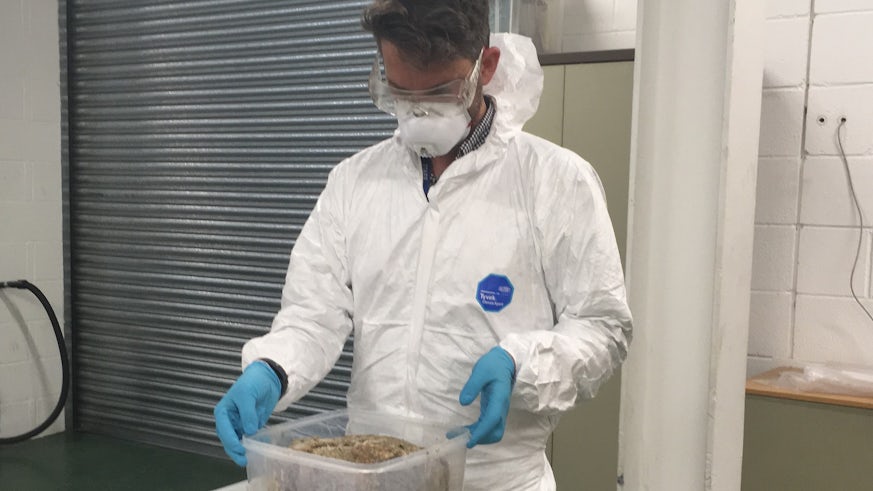Fatberg! The highs and lows of Conservation
20 February 2018

Alumnus’ latest challenge calls on principles honed in Conservation degrees
It’s not every day a conservator faces the challenge of conserving something most people would rather see disappear, and fast.
But when Museum of London’s Collections Care Manager Andy Holbrook prepared for the grotesque but hugely popular Fatberg! exhibition, he needed to draw on all the principles learned as an undergraduate and postgraduate of conservation to meet a frankly gruesome task.
Last September, the Whitechapel fatberg was a 130 tonne, 250 metre-long monster, a toxic congealed mass of fat and oil, testament to modern throwaway culture. Only jet hoses and pick axes could finally clear the mass from London’s east end sewers.
Now shoebox-sized fatberg fragments, air-dried into grey, pumice-like objects, lie under glass at the Museum of London. Changing colour and emitting the odd fly in a sealed unit, the two samples are the centrepieces of an unusual hit exhibition, just opened.
Analysis found the fatberg to be about two-thirds fat, more than half of which was palmitic - found in palm oil and olive oil, butter, cheese and meat - with laundry detergent and cosmetics added for good measure. The remaining mass was oleic acid, commonly used in olive and almond oil and soap, combined with a sobering mix of ash and fecal bacteria.
A graduate of Cardiff’s BSc Conservation of Objects in Museums and Archaeology and MSc Conservation, Andy found himself facing a new unique challenge. “Working on this exhibition has taught me so much about the hidden worlds of a city, and how the infrastructure is so under pressure in a rapidly developing urban centre like London” he explains.
“Professionally, conserving fatberg has been so interesting. It is a material type entirely new to the museum world; no-one has tried to do this before. And while we are used to working with buried, archaeological objects and hazards materials, we have never had to start from scratch with a new set of materials and risks before. The fact that we have found a way to make it work safely using the principles learned at Cardiff has been so rewarding.”
But the experienced conservator hopes that people who see the fatberg will go away and think twice the next time they’re about to tip cooking oil or cosmetics down the plughole.
Whilst little may remain by the end of exhibition, the disconcerting truth is another gross legacy of modern living is growing somewhere else in the sewer network.
Fatberg! is on display at the Museum of London until 1 July.